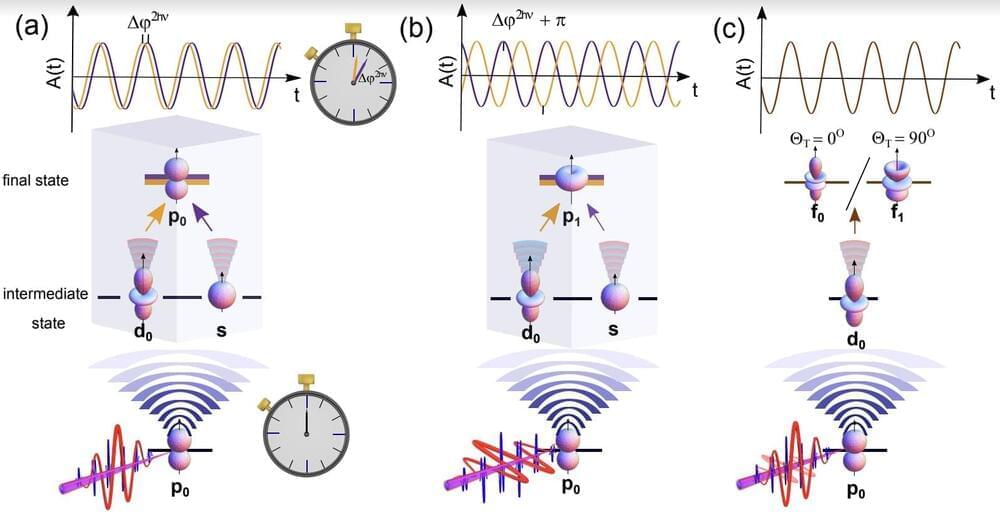The field of attosecond physics was established with the mission of exploring light–matter interactions at unprecedented time resolutions. Recent advancements in this field have allowed physicists to shed new light on the quantum dynamics of charge carriers in atoms and molecules.
A technique that has proved particularly valuable for conducting research in this field is RABBITT (i.e., the Reconstruction of Attosecond Beating By Interference of Two-photon Transitions). This promising tool was initially used to characterize ultrashort laser pulses, as part of a research effort that won this year’s Nobel Prize, yet it has since also been employed to measure other ultrafast physical phenomena.
Researchers at East China Normal University and Queen’s University Belfast recently built on the RABBITT technique to distinctly measure individual contributions in photoionization. Their paper, published in Physical Review Letters, introduces a new highly promising method for conducting attosecond physics research.
